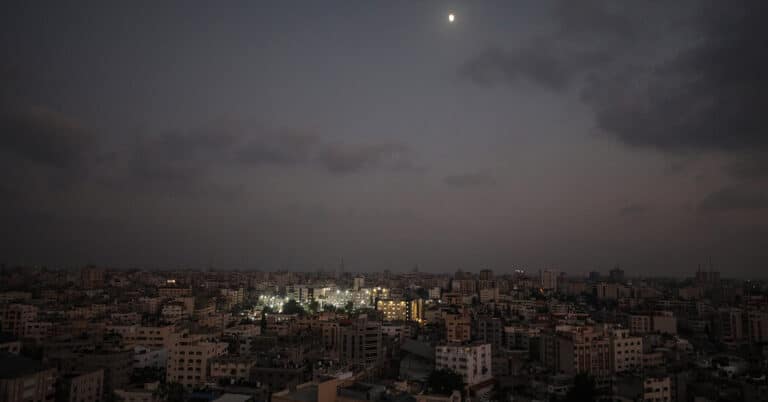The battle over Al-Shifa Hospital in Gaza highlights a tension that often goes unmentioned in the debate over the war between Israel and Hamas: There may be no way for Israel both to minimize civilian casualties and to eliminate Hamas.
The reality of this trade-off still doesn’t answer the question of what should happen in Gaza. Some people will conclude that the human cost, in the lives of innocent Palestinians, does not justify removing Hamas from power — or that Israel may be undermining its own interests by trying to dismantle Hamas. Others will conclude that Hamas’s recent killings of innocent Israelis and its repeated vows to destroy Israel represent a threat that no country would accept on its border.
Nonetheless, Al-Shifa — a major hospital that includes a neonatal department — highlights the lack of simple answers in Gaza, and I want to use today’s newsletter to explain.
Hamas and hospitals
There is substantial evidence that Hamas has used the hospital for military operations and has built a command center underneath it as part of Gaza’s tunnel network:
- A New York Times journalist in 2008 watched armed Hamas militants walking around Al-Shifa Hospital in civilian clothes and witnessed Hamas execute a Palestinian man accused of collaborating with Israel.
- Amnesty International concluded that in 2014 Hamas used parts of Al-Shifa “to detain, interrogate, torture and otherwise ill-treat suspects, even as other parts of the hospital continued to function as a medical center.”
- More recently, Israel has released audio recordings that purport to contain conversations in which Hamas fighters discuss tunnels under Al-Shifa as well as videos of interrogations in which captured militants discuss the tunnels.
- Israeli officials allowed Times reporters to view photographs that appear to show secret entrances inside the hospital that lead to a military compound underneath.
- U.S. officials say their own intelligence also indicates Hamas has built a tunnel network under Al-Shifa that includes command and control areas as well as weapons storage.
Hamas has a long history of placing its operations in hospitals, mosques and other civilian areas so that Israel must risk killing innocent bystanders — and thereby damage its reputation — to attack Hamas fighters. “I’ve seen these things for myself,” Steven Erlanger, a longtime Times correspondent, has said on “The Daily” podcast.
Hamas denies that it uses civilians as shields, and two Norwegian doctors who have worked in Gaza have backed its denials. The head of Al-Shifa Hospital, Dr. Mohammed Abu Salmiya, has also said Hamas does not operate there. He told The Times last week that Israeli allegations were “untrue.”
But it’s worth remembering that officials with the Gaza Health Ministry have had a problematic record in recent weeks: On Oct. 17, they claimed that Israel was responsible for an explosion at another hospital and said the explosion killed about 500 people. Both claims appear to be false, as I have explained. A Palestinian rocket was the likely cause, according to U.S., Canadian and French officials, and the death toll appears to have been much lower.
The situation with Al-Shifa seems similar: Outsiders cannot know the truth for certain (at least until cameras are allowed inside the hospital and the tunnels underneath it), but the Israeli claims have much more evidence behind them than Hamas’s claims.
The U.S. position
The likelihood that Hamas is operating inside and underneath Al-Shifa creates the trade-offs that I described above. If Israel is committed to ending Hamas’s rule of Gaza, it almost certainly needs to attack Hamas’s major command centers — and destroying the Al-Shifa operations puts patients, doctors and nurses there at mortal risk.
“The Israeli government says it will not allow any political or security role for Hamas in ruling Gaza, but Hamas has firm control of Gaza now,” my colleague Julian Barnes, who covers intelligence from Washington, told me. “The problem is that the tactics Israel is using to destroy the tunnels, eliminate the weapons and force Hamas out of power is causing huge civilian suffering, which in turn is putting pressure on the government to stop. And it is increasing pressure on Israel’s allies to make the government change tactics.”
There is a potential middle ground in which Israel tries to root out Hamas while also reducing civilian casualties. (Israel says it is pursuing this strategy; Gaza officials say Israel has shown a disregard for Palestinian lives.) One way for Israel to do so would be to use more ground troops around hospitals, Julian says, but that approach would have its own downside by exposing Israeli troops to more danger.
U.S. officials have advocated a version of this middle ground. It would involve allowing more humanitarian aid into Gaza than Israel has allowed so far and not attacking hospitals where patients are still receiving treatment, U.S. officials say. “Hospitals must be protected,” President Biden said yesterday.
Jake Sullivan, Biden’s national security adviser, has gone into more detail: “The United States does not want to see firefights in hospitals, where innocent people, patients receiving medical care, are caught in the crossfire.” But Sullivan also said that Hamas continued to use hospitals and other civilian buildings as “human shields” — which underscores that war often involves horrific trade-offs.


